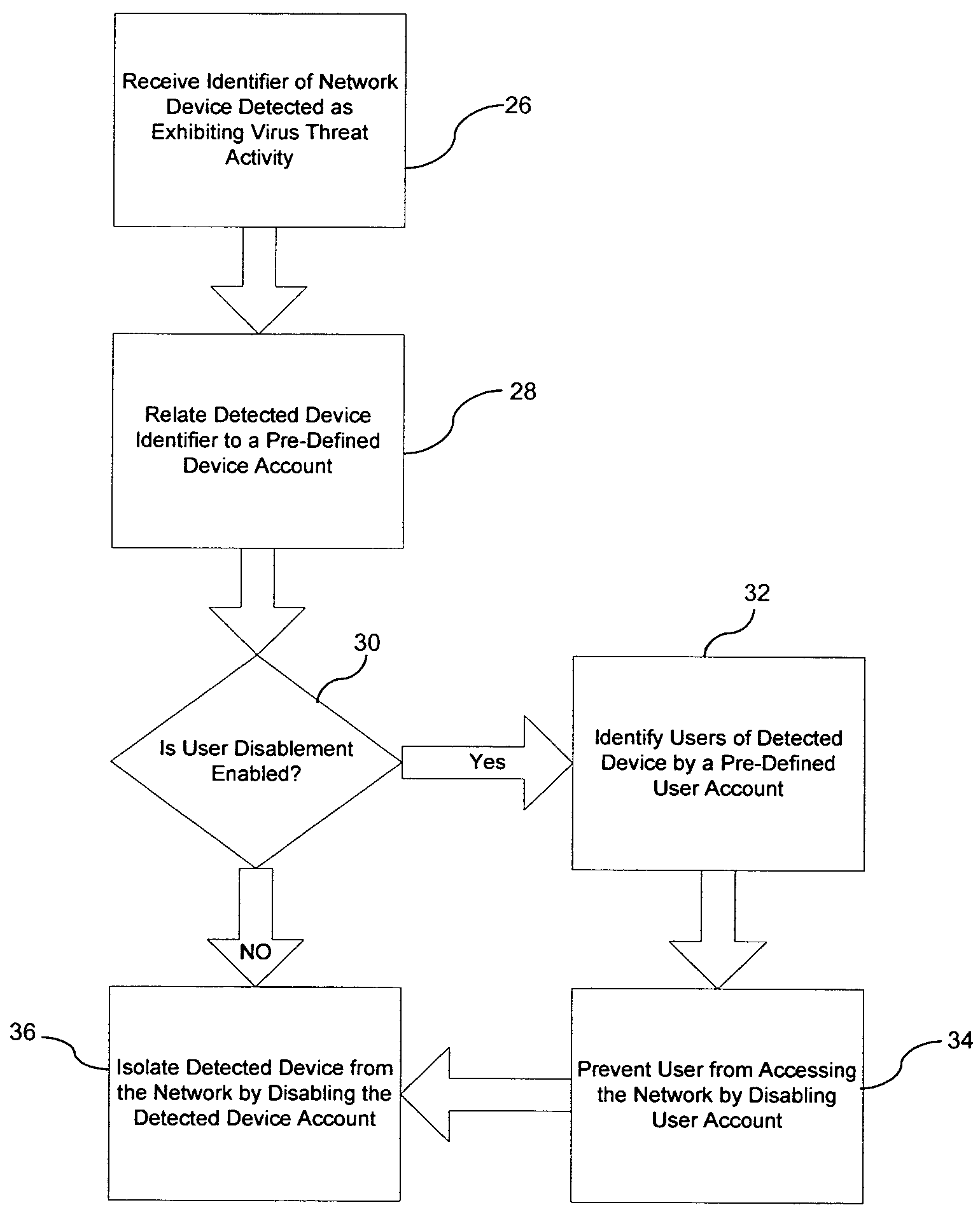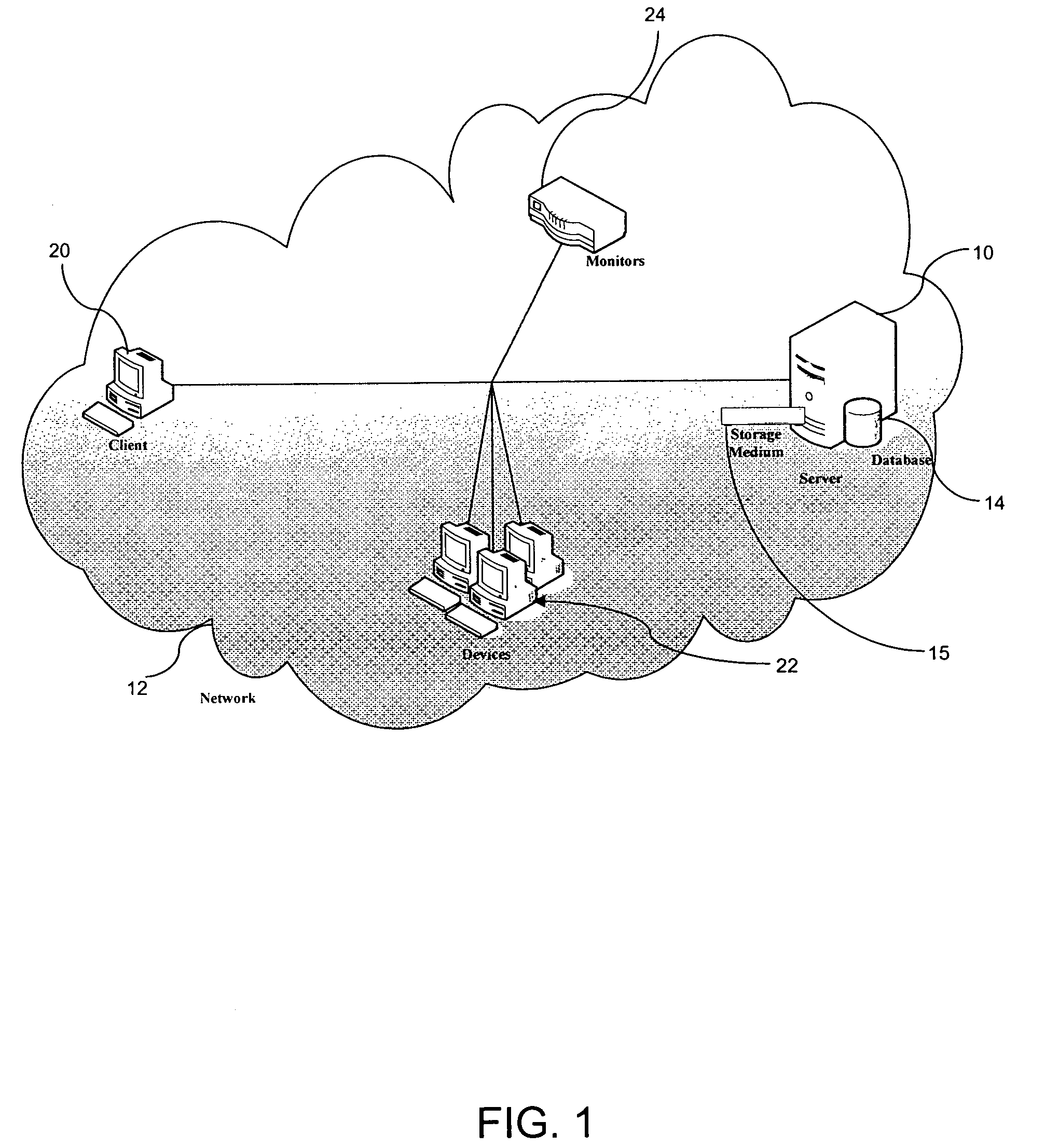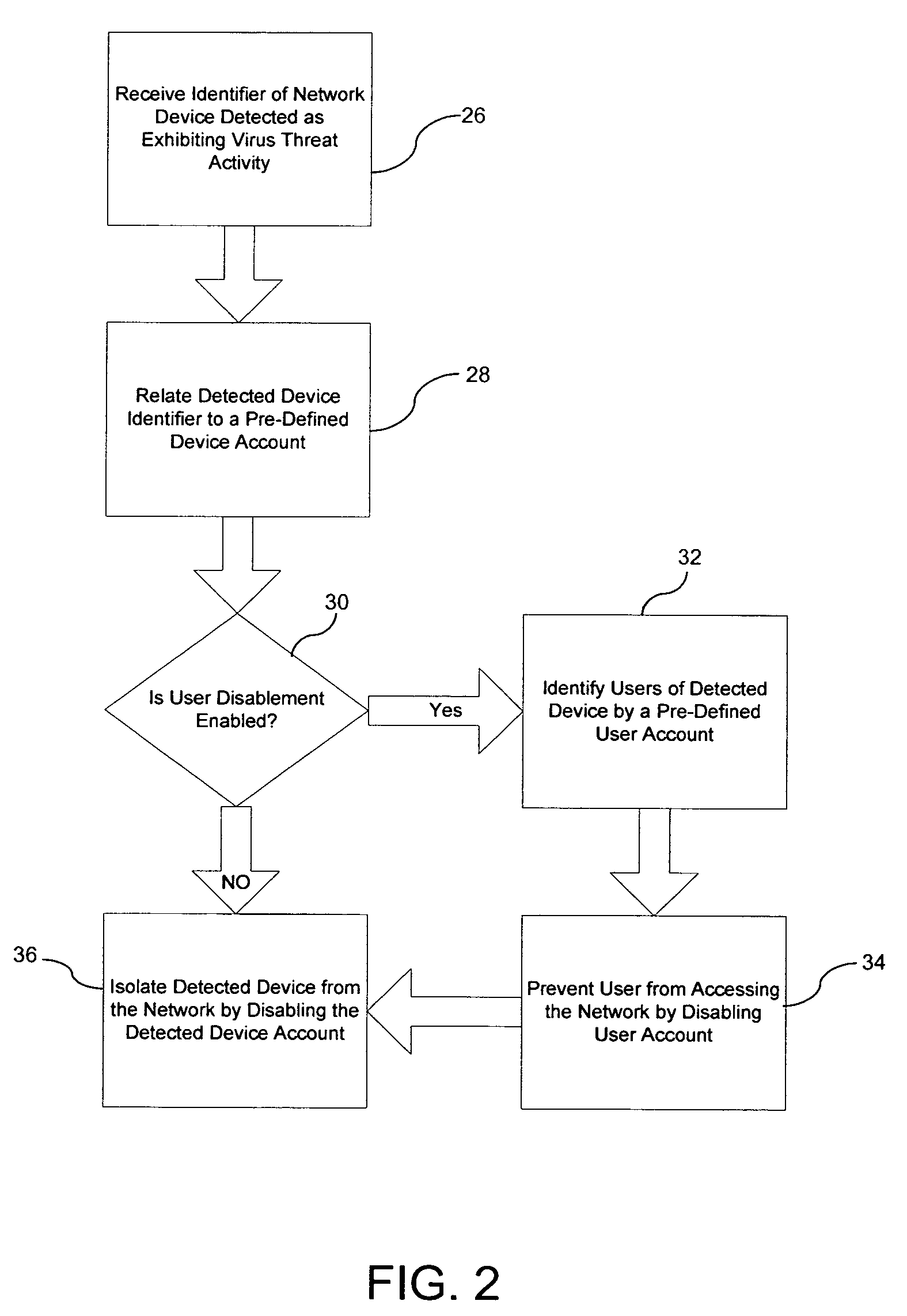System and method for reducing the vulnerability of a computer network to virus threats
a technology of virus threats and computer networks, applied in the field of network system management, can solve the problems of slowing down of corresponding threats on the public internet, time-consuming and laborious, and difficulty in preventing the spread of computer system integrity threats, so as to reduce the vulnerability of a computer network, prevent the infection of the network, and prevent the effect of infection
- Summary
- Abstract
- Description
- Claims
- Application Information
AI Technical Summary
Benefits of technology
Problems solved by technology
Method used
Image
Examples
Embodiment Construction
[0024]The inventors of the present invention have innovatively recognized that by receiving an indication of a virus threat to a computer network and automatically isolating infected computers and preventing users of infected computers from accessing the network, further infection of the network may be quickly and effectively prevented.
[0025]To facilitate an understanding of the present invention, it is described hereinafter with reference to specific implementations thereof. The invention is described in the general context of computer-executable instructions, such as program modules, being executed by a computer. Generally, program modules include routines, programs, objects, components, data structures, etc. that perform particular tasks or implement particular abstract data types. For example, the software programs that underlie the invention can be coded in different languages, for use with different platforms. In the description that follows, examples of the invention are desc...
PUM
 Login to View More
Login to View More Abstract
Description
Claims
Application Information
 Login to View More
Login to View More - R&D
- Intellectual Property
- Life Sciences
- Materials
- Tech Scout
- Unparalleled Data Quality
- Higher Quality Content
- 60% Fewer Hallucinations
Browse by: Latest US Patents, China's latest patents, Technical Efficacy Thesaurus, Application Domain, Technology Topic, Popular Technical Reports.
© 2025 PatSnap. All rights reserved.Legal|Privacy policy|Modern Slavery Act Transparency Statement|Sitemap|About US| Contact US: help@patsnap.com



